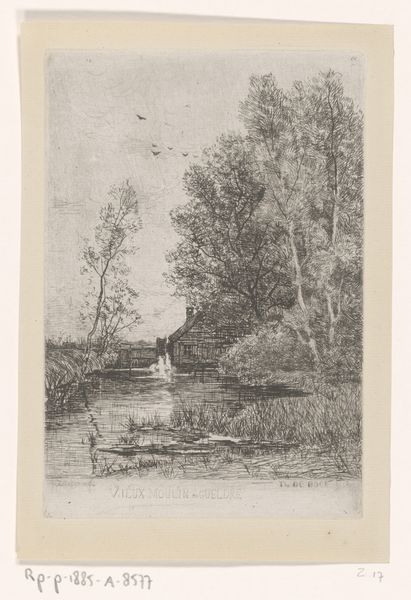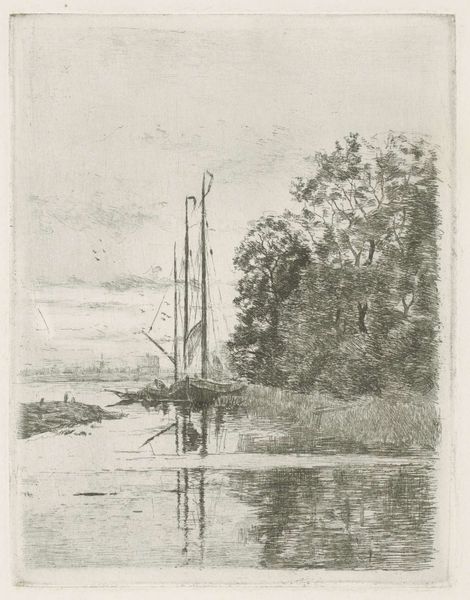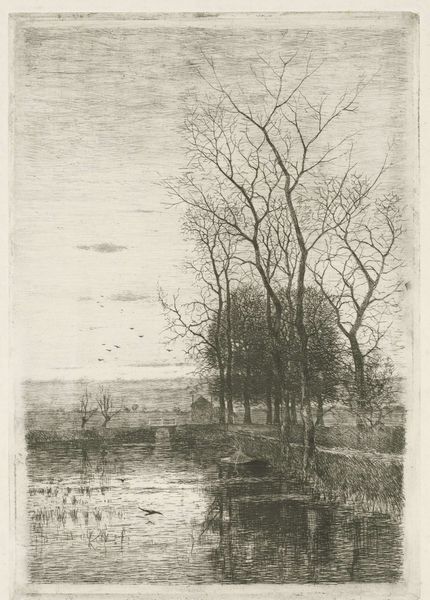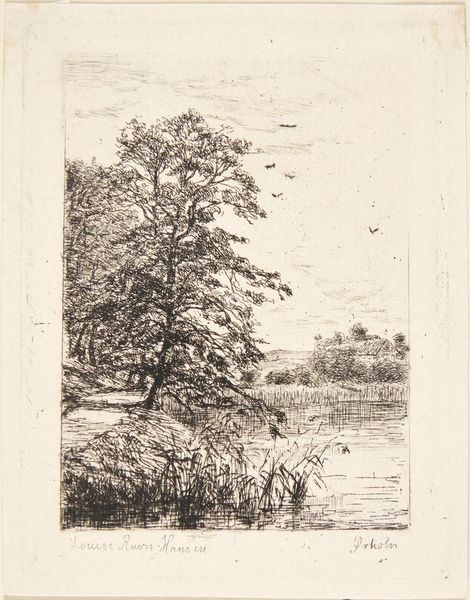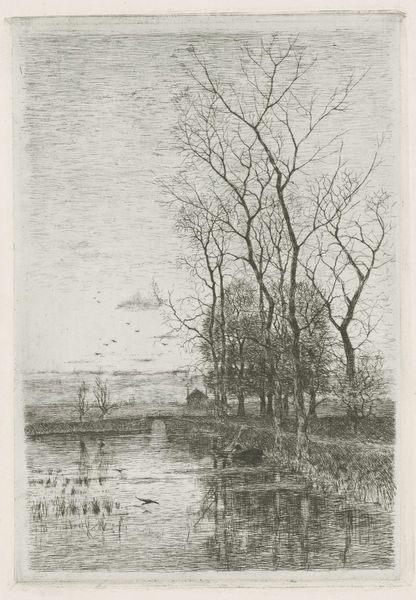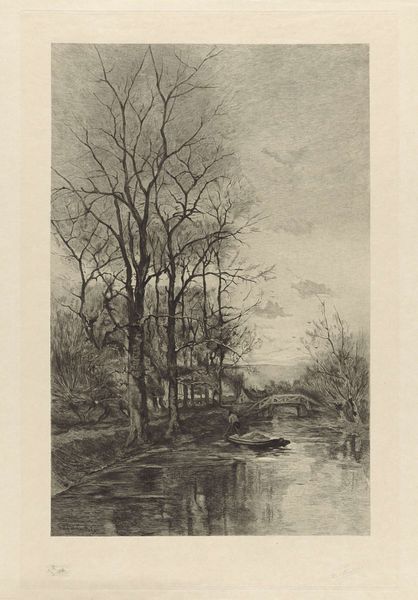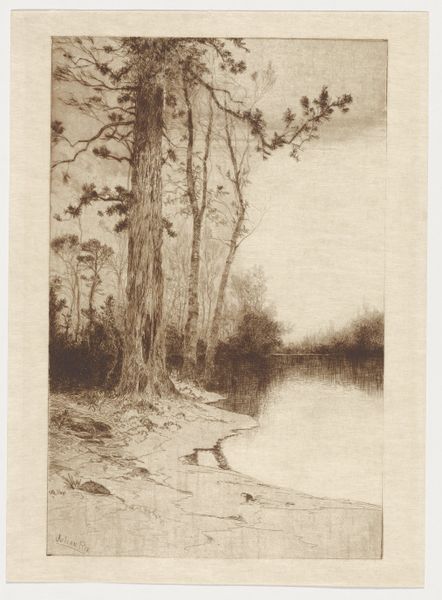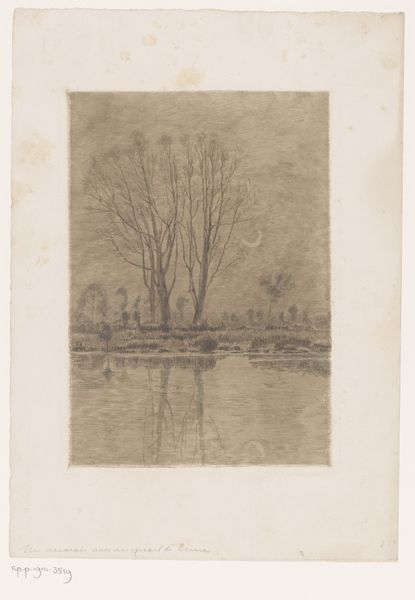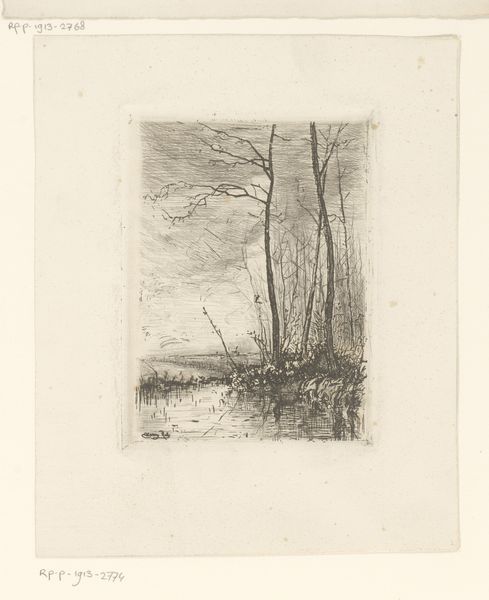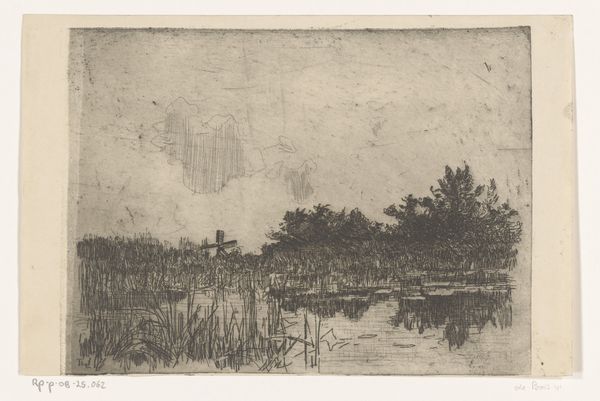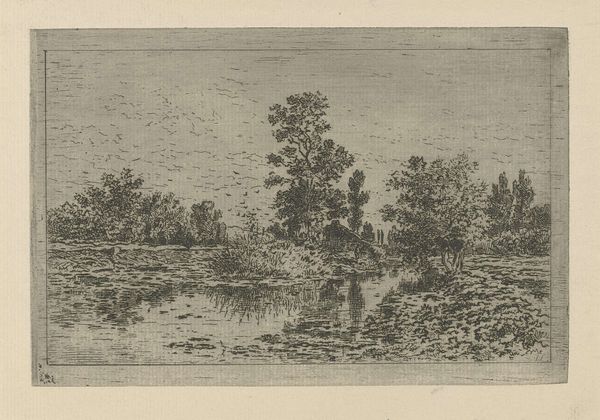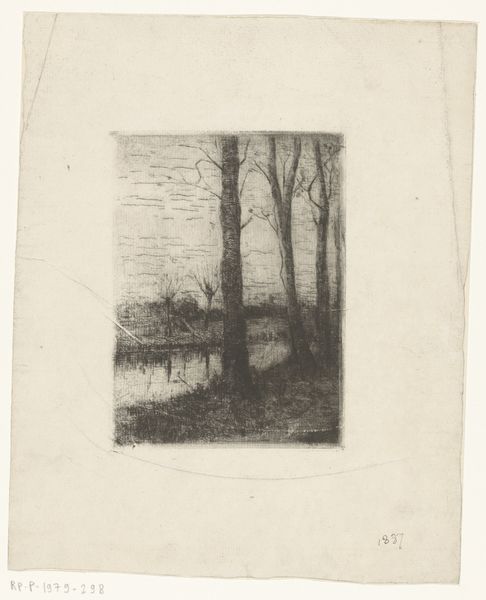
etching
#
impressionism
#
etching
#
landscape
#
etching
#
genre-painting
Dimensions: height 208 mm, width 140 mm
Copyright: Rijks Museum: Open Domain
Curator: It's remarkable how quiet this piece is; there's an understated peace about it. What are your initial thoughts? Editor: Well, immediately I’m struck by the traditional symbolism of water – a universal image for the subconscious, for the flowing of life. It makes me curious about the fishermen and their connection to something deeper. Curator: Indeed. We’re looking at "Two Fishermen in a Boat," an etching by Fredericus Jacobus van Rossum du Chattel, likely created sometime between 1873 and 1892. Du Chattel often turned his observant eye towards the everyday, seeking dignity in simple scenes. And that scene is, on its surface, rather unassuming. Editor: The unassuming is often where power resides. I notice the way the figures in the boat almost disappear into the reeds and reflections. It feels significant—as though their identities, perhaps even their labor, are consumed and rendered invisible by this tranquil yet indifferent landscape. The natural elements seem to exert control. Curator: Yes, there's a strong argument that this artwork subtly captures class dynamics, showing the quiet struggles and erasure of working-class existence. What do you make of the little house in the background? It feels… distant. Editor: That's fascinating. Houses always represent shelter and security, but here it looks almost spectral. Like a memory reflected on the water. Perhaps it symbolizes an idea of home that these figures are striving to maintain, even though they're largely obscured by a dominant natural world. They might find comfort or escape there at day's end. Curator: And etched into being at a moment where impressionistic explorations began to transform landscape, and genre scenes started incorporating some sense of ordinary, sometimes oppressive life. Editor: Perhaps there’s also the psychological dimension: the landscape can symbolize inner states; those reeds becoming metaphorical blockades. There is that delicate play between external landscape and internalized emotional space to ponder here, even from our perspective of so many years later. Curator: What lingers with me is that dichotomy. Du Chattel’s delicate strokes craft an evocative image from the everyday that sparks reflection, and still has political resonances today. Editor: Yes, seeing the painting's gentle yet loaded iconography makes me wonder who were these men and how did their daily acts weave a complex tapestry within a world we can glimpse only a century and a half later.
Comments
No comments
Be the first to comment and join the conversation on the ultimate creative platform.
